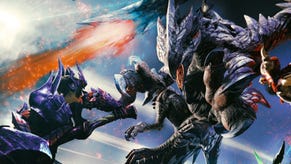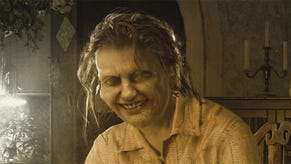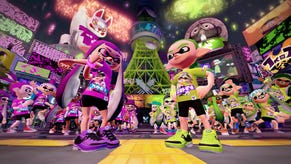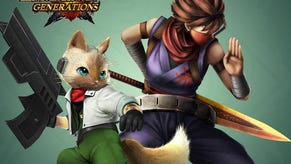Three Little Changes that Make a Big Difference in Monster Hunter Generations
With the core Monster Hunter experience remaining the same, it's the small stuff that matters.
This article first appeared on USgamer, a partner publication of VG247. Some content, such as this article, has been migrated to VG247 for posterity after USgamer's closure - but it has not been edited or further vetted by the VG247 team.
The remaining half of 2016 has quite a few RPGs in store for the 3DS, but one of the more notable ones is just around the corner: Monster Hunter Generations.
By this point in the series' history, Monster Hunter feels more like a sports game than an RPG: The core experience doesn't change, narrative doesn't really matter, and each installment brings a host of new additions presumably engineered to make the titular hunting more enjoyable. (Except the underwater battles. We don't talk about those anymore.)
Even though Generations features some pretty big improvements—like the various hunting Styles, which borrow a bit from Devil May Cry's handbook—in playing the game for next week's review, the small changes have stuck out the most. While they only amount to minor refinements, the "Why the hell haven't they been doing this the whole time?" factor makes them important—especially since a lot of us have been asking that question for years now.
Easier Gathering
Monster Hunter features a lot of crafting. And while you generally make the flashier, more rewarding items with parts gained by felling monsters, the items needed to take said monsters down in the first place are just as important. Crafting traps, healing potions, status buffs, and other helpful goods always entailed hitting the wilderness and nabbing their necessary parts from various resource points littered around the map. While this is still true—and still not the most exciting activity in the world—Generations streamlines gathering by allowing you to hold the button in until the resource point is depleted, rather than having to wait for an entire animation to play out before you're allowed to gather from that point once again. This, combined with the fact that resource points now hold far more items than they used to, means gathering in Generations is less frequent and more efficient. That's a great idea for a game where you end up doing a lot of it.

Felyne Deliveries
This is another gathering-related change, which shows just how much room Capcom had to improve on this particular element of Monster Hunter. Now, in past installments of the series, you were free to gather to your heart's content until your inventory hit its limit—and with the sheer amount of items available in the field, it didn't take long for this to happen. So, at a certain point, you'd always have to trek back to town to drop off your goods, or be confronted with an annoying menu asking what you wanted to toss or keep every time you touched a new item. Players still have an item limit, but maps now feature a friendly Felyne (a member of Monster Hunter's cat race) that will take back one inventory's worth of goods per mission. This addition comes as a huge convenience, seeing as it cuts in half the amount of times you'll have to return to HQ if you're trying to fill your stock with craftable goods.
The New 3DS' Analog Nub Works by Default
There's a reason the New 3DS launched alongside Monster Hunter 4 Ultimate in the States last year; with the handy analog nub and extra shoulder button, this new hardware was practically designed around the complex controls of Capcom's RPG. So it always struck me as odd that, in order to activate the analog nub, you'd need to dive into a few menus every time you started up a new game—MH4U wouldn't remember this option once you turned it off. I don't have to tell you I was overjoyed when, upon starting Monster Hunter Generations, it immediately recognized the fact that I was using the New 3DS, and switched the nub on as a result. Again, it's a small improvement, but not having to dive through menus needlessly every time I start up Monster Hunter means dealing with one fewer annoyance every time I want to play.
Look for USgamer's full review of Monster Hunter Generations on Tuesday, July 12 at 6:00am PT!














